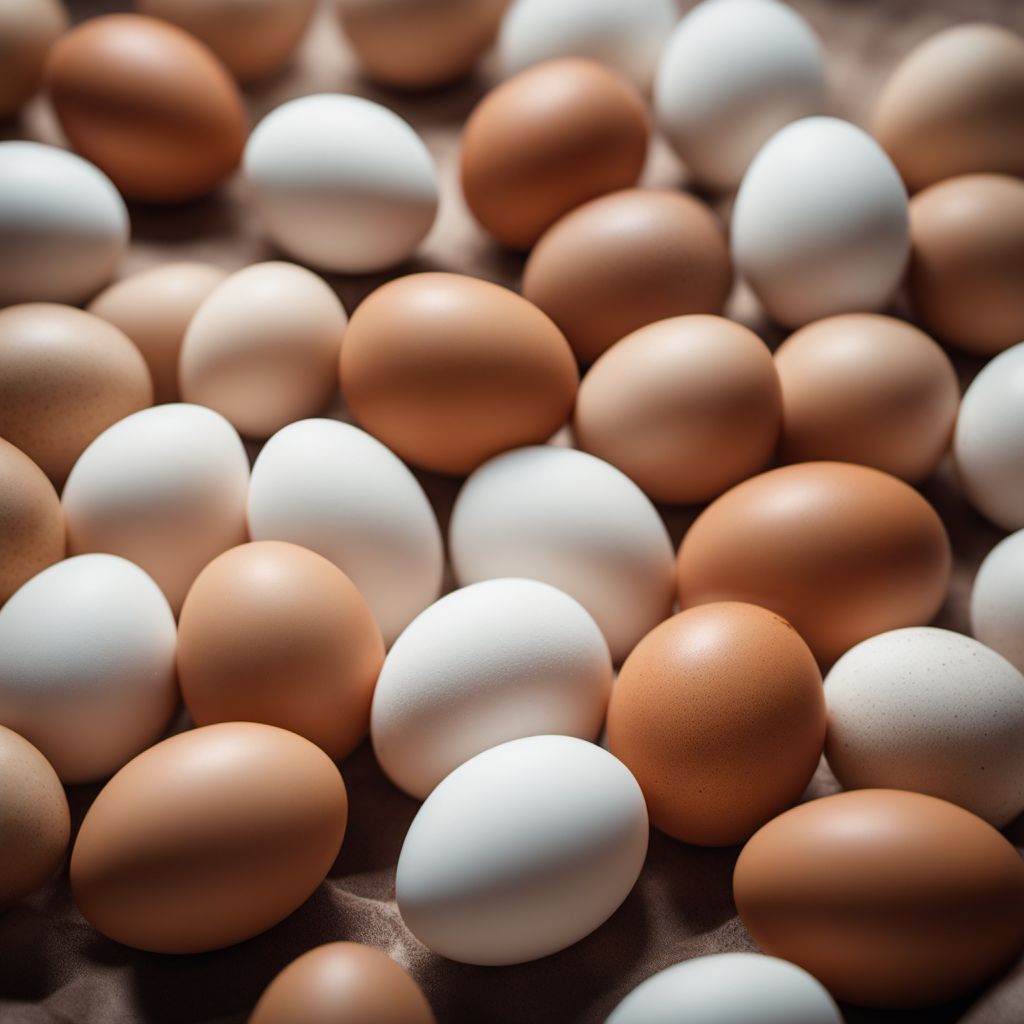
Ingredient
Eggs from other not listed eggs producer birds
Exotic Eggs: A World of Avian Delights
Eggs from other not listed eggs producer birds encompass a wide range of avian species, including ducks, geese, quails, ostriches, and more. These eggs vary in size, color, and taste, providing a diverse culinary experience. From the rich and creamy yolk of a duck egg to the delicate and petite quail egg, each variety adds its own unique touch to dishes.
Origins and history
The consumption of eggs from various bird species dates back centuries and is deeply rooted in different cultures around the world. Duck eggs, for example, have been enjoyed in Asian cuisines for their rich flavor and versatility. Quail eggs are a delicacy in many European countries, often served as appetizers or used in gourmet recipes. Ostrich eggs, with their massive size, have been treasured by indigenous communities in Africa for their nutritional value and ceremonial significance.
Nutritional information
Eggs from other not listed eggs producer birds are a good source of protein, vitamins, and minerals. They are particularly rich in choline, which is essential for brain health. The nutritional composition varies slightly between different bird species, but overall, these eggs offer a nutrient-dense addition to the diet.
Allergens
Eggs from other not listed eggs producer birds may cause allergies in individuals who are sensitive to chicken eggs. It is important to exercise caution and consult with a healthcare professional if you have any known allergies or dietary restrictions.
How to select
When selecting eggs from other not listed eggs producer birds, look for clean and intact shells. The shells should be free from cracks or damage. Additionally, consider the source and ensure that the eggs are obtained from reputable producers who prioritize animal welfare and sustainable practices.
Storage recommendations
To maintain the freshness and quality of eggs from other not listed eggs producer birds, store them in the refrigerator at a temperature below 45°F (7°C). It is advisable to consume them within a reasonable time frame to ensure optimal taste and safety. Before using, always check for signs of spoilage, such as an off odor or unusual appearance.
How to produce
Producing eggs from other not listed eggs producer birds requires specialized knowledge and facilities. It is recommended to leave the production to professional farmers who have experience in raising and caring for these avian species.
Preparation tips
Eggs from other not listed eggs producer birds can be prepared and used in various ways, depending on the specific variety. Duck eggs are often used in baking, custards, or as a substitute for chicken eggs in recipes. Quail eggs are commonly boiled, fried, or used as decorative garnishes. Ostrich eggs, due to their large size, are typically used for special occasions or in recipes that require a significant amount of eggs, such as omelets or baking projects.
Substitutions
Chicken eggs can be used as a substitute for eggs from other not listed eggs producer birds in most recipes. However, keep in mind that the flavor, texture, and appearance may differ. Adjustments may be necessary to achieve the desired results.
Culinary uses
Eggs from other not listed eggs producer birds are used in a variety of culinary applications. Duck eggs are prized for their rich flavor and are often used in baking, pasta-making, or as a luxurious addition to breakfast dishes. Quail eggs are commonly served as appetizers, pickled, or used in salads. Ostrich eggs, due to their size, are often used for special occasions or in recipes that require a large quantity of eggs, such as baking or cooking for a crowd.
Availability
Eggs from other not listed eggs producer birds are commonly available in regions where these avian species are raised or imported. They can be found in specialty grocery stores, farmers markets, or online retailers that cater to diverse culinary preferences.
More ingredients from this category

Emu eggs
The Majestic Emu Egg

Nandu eggs
The Exotic Gem: Nandu Eggs

Ostrich eggs
The Majestic Marvel: Discovering the Wonders of Ostrich Eggs

Seagull eggs
"Nature's Coastal Delicacy: Exploring the Unique Flavors of Seagull Eggs"

Turkey eggs
"The Hidden Gems: Exploring the Unique Delights of Turkey Eggs"